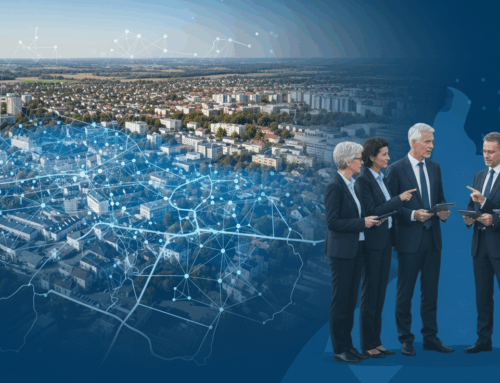The transformation of the heating supply is one of the key levers for achieving climate protection targets at municipal level. In Germany, the heating sector accounts for around 55% of final energy consumption – predominantly from fossil sources. The municipal heat transformation aims to systematically replace fossil heat generation with renewable heat sources and highly efficient networks.
Municipalities are not only supply areas, but also designers: they set target grids, define expansion priorities and implement the legal framework locally. With clear transformation planning, municipalities can combine security of supply, climate protection and economic location advantages.
A successful municipal heat transformation is strategically planned, legally sound and financially secure. It requires a combination of sound analysis, clear targets, realistic timetables and viable financing concepts. With these guidelines, a municipality can take a structured approach to the transition from a fossil fuel-based heat supply to a climate-neutral heating network.
The plan can be worked out in the following structure:
Inventory (current status): Survey of the existing heat supply (technologies, energy sources, age of systems).
Georeferenced recording of building structures, heat demand densities, network infrastructure.
CO₂ balance sheet based on emission factors.
Potential analysis:
Identification of renewable heat sources: Solar thermal energy, geothermal energy, biomass, waste heat, large heat pumps.
Analysis of the possibilities for sector coupling (electricity-heat, waste heat feed-in).
Economic evaluation of the options.
Target grid planning: (target state)
Definition of the target grid with route, generation points and storage locations.
Definition of the target RE shares per expansion stage.
Technical standards and efficiency specifications.
Transformation path & milestones:
Short, medium and long-term packages of measures (e.g. pilot sections, main line construction, grid densification).
Definition of annual expansion targets (RE share, CO₂ reduction, connection rate).
Timetable with clear responsibilities.
Financing & subsidies:
Presentation of investment volume, sources of financing (equity, debt, subsidies).
Selection of suitable operator models (PPP, concession, minority shareholding, cooperative model).
Profitability calculations (LCOH, amortization period).
Legal & organizational implementation:
Adaptation of municipal bylaws and heat supply concepts.
Contract models for mandatory connection and use.
Clear governance structure (project company, supervisory bodies).
Communication & participation:
Transparent citizen information and participation processes.
Involvement of local companies and tradespeople.
Regular progress reports to the municipal council and the public.
Monitoring & adaptation:
Annual evaluation of target achievement (RE share, CO₂ reduction, costs).
Adaptation of the transformation path if framework conditions change.
Integration of new technologies.






